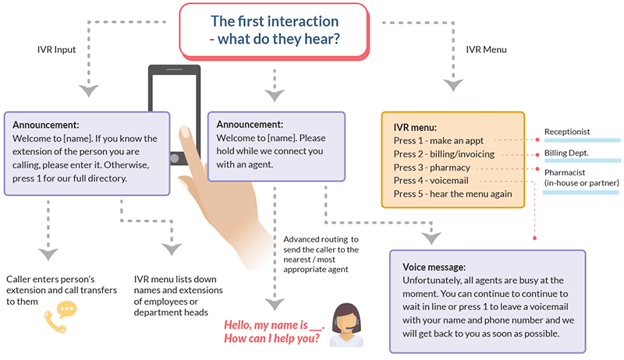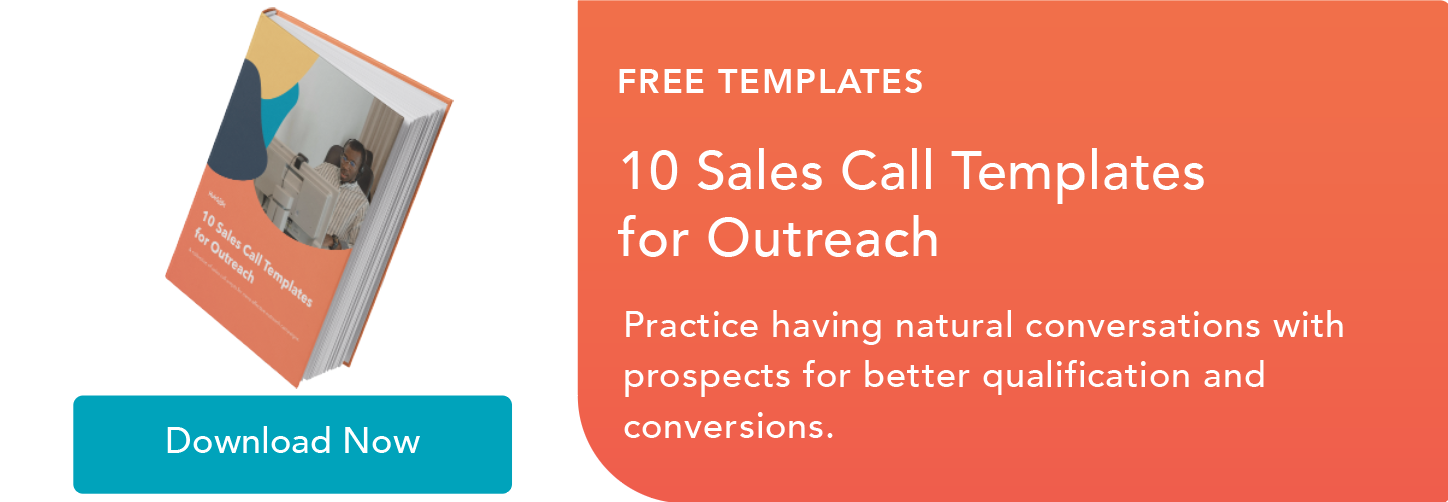Your phone rings and you decide to pick this one up instead of letting it go to voicemail. You are greeted with a pitch from a pushy sales rep. Odds are, if you don’t want what they’re selling, you’ll hang up immediately. Even if you do, the pushiness is a turnoff and you might buy the product elsewhere or through a different sales rep. That’s why mastering an outbound call is so important.
Outbound calls are any call made by your business, while cold calls happen when sales representatives call prospects without knowing if they’re interested in your offerings.
In this post, we’ll go over:
- What an outbound call is
- Outbound vs. inbound calls
- How to make effective calls
Outbound vs. Inbound Calls
Simply put, an outbound call is made by the call center representative to a prospect while an inbound call is made by a customer or prospect to the business or organization.
Outbound calls are typically made to:
- Generate interest in a product or service
- Close a deal
- Conduct market research
- Schedule a meeting
- Follow up with a customer after a sale
On the other hand, customers or prospects commonly make inbound calls to:
- Place an order
- Raise issues with a product or service
- Schedule an appointment or meeting
- Request technical support
- Ask for help with account management
Ultimately, it’s important to remember that the strategies you use and even the mood of the customer will differ from outbound to inbound calls.
While an inbound caller is expecting to talk to someone, learn about a product they’re genuinely interested in, or solve a problem via customer service or an upgrade, a person you outbound call won’t be expecting you, might not have much time to hear you out, and might even not wish to talk with a salesperson over the phone.
Due to the reasons above, it’s key for you and your team to leverage the right strategies to ensure your outbound calls don’t result in hangups or unproductive conversations that waste both you and your prospects’ time.
How to Make Effective Outbound Calls
1. Embrace training and team resources.
First impressions matter. And when all someone has to judge you from are your words and how you deliver them over the phone, your outbound calling strategy is especially important.
If you lead a sales team, don’t leave your agents empty-handed; give them the training and resources they need to be prepared to communicate with customers and prospects.
If you’re a sales rep, check out or brush up on trainings related to your company’s messaging, common sales tactics that work on the ideal buyer persona, and experiences aimed to help you master soft skills, like persuasion, communication, and emotional intelligence. You could also consider shadowing top-selling salespeople to learn about their techniques, or having them shadow you and offering feedback.
For a great sales call, it’s key for agents to be knowledgeable about company offerings, conversational, and respectful.
Here are some ways to ensure you and your team are prepared:
Call Scripts
Preparation is key. Call scripts ensure you and your fellow sales reps cover the key points. They also can help you navigate in situations like sales objections, complaints, or unexpected downgrades as they’re usually designed to show you what to do in basic scenarios.
When writing a sales script for your team or refining one for your own use, it’s critical to make sure the call scripts sound natural, rather than robotic as many people catch on quickly to someone reading to them off a screen or paper. To get started in writing one, check out this template.
Call Flows
Service teams might know a call-flow as an automated path that a caller goes on when they call a business and are then directed to press or say a number to go to the right rep automatically, as shown in this image:

Source
However, in the sales space, you can draw out a similar call flow diagram for outbound calls that takes a call script a step deeper by mapping out strategies and responses for all sorts of scenarios that come up in the buyer’s journey..
For example, this can prepare sales people for questions like:
- What do I do if a major prospect hangs up?
- What do I do if a customer I called about an upgrade actually wants to cancel or downgrade?
- Should I upsell if the customer I called expresses excitement?
Training Sessions
One way to gain knowledge and confidence to communicate with prospects and customers is to practice the craft in training sessions.
As a sales professional at any level, you should never stop practicing your craft. Even if you’re winning deals left and right, it can’t hurt to accept or seek out training opportunities for advanced techniques – or learn how to sell to customers of different calibers and price ranges. This will set you up for success in both your current role and your future career.
As a team lead or manager, providing training sessions on a regular basis, plus onboarding sessions for new team reps, will keep them up-to-date on the latest strategies and tactics. It’s also important to help them to continue learning even when their skills have surpassed basic training.
For example, you could train new reps on basic communication skills, while seasoned reps could get more intensive training or mentorship to learn about more unique, innovative, or unprecedented sales call scripts and scenario planning.
Call Recordings
By analyzing your or your team’s call recordings, you’ll be better able to pinpoint what makes for a successful call – and conversely, why calls fail. These data insights will help inform your outbound call strategy.
2. Use the right software.
Equipping yourself and your team with the tools is essential to effective outbound calling. Agents will be able to reach out to prospects and customers in an organized manner so your team can spend less time dialing and more time selling.
A good call center tool should enable you to track calls and prioritize the calls in your queue. VoIP (voice over IP) technology powers the ability to make calls over your browser — you don’t need to pick up a phone.
For example, tools like HubSpot’s Call Tracking Software combined with HubSpot CRM integration can save agents time, by automating call logs and other tasks for them. .
Learn more about HubSpot’s Call Tracking Software
3. Make the call.
Once you’ve taken all the steps to prepare for the call, it’s time to start contacting your prospects or customers. Here are some quick tips to keep in mind:
- Call at a good time of day for the prospect or client.
Be sure to avoid calling at times when people might be sitting down for dinner or too early in the morning when people are just getting into work.
- Try to sound as kind, helpful, and as naturally knowledgeable as possible.
Use your script as a reference point, but don’t read directly off it or you might sound unauthentic or robotic.
- Be confident, but not too pushy.
If the customer doesn’t have time to talk or really doesn’t want what you’re selling, don’t force them to keep talking to you if it will just result in you losing time to make another call.
For more tips on how to make successful calls, check out this blog post.
4. Analyze performance.
Reporting is an integral part for analyzing the performance of outbound calls and consequently improving them. Metrics that are measured include: connection rate, average handle time, occupancy rate, conversion rate, and abandon rate.
Analyzing data will help you learn about what works, what doesn’t, and what new strategies to test.
Get Started With Outbound Calls
When done well, and combined with inbound sales strategies, outbound calls can be a productive sales tactic for your business. With the right training, resources, and software, you can empower yourself and your team to use them to build rapport, relationships, and conversations that ultimately lead to deals for your company.
Still a little unsure of where to start? Click below to take the next step in planning your next successful outbound or cold call.

![]()


![Read more about the article 7 Ways to Recession-Proof Your Business [+9 Recession-Proof Business Ideas]](https://www.dimaservices.agency/wp-content/uploads/2022/10/e9d2eacb-6b01-423a-bf7a-19d42ba77eaa-300x41.png)

